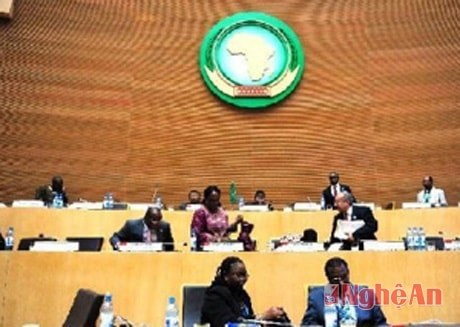The story of poor countries!
(Baonghean) - The trend of global economic globalization poses numerous difficulties for economies with low competitiveness. The strong development of science and technology, the speed of development of production forces and the world economy has put many developing countries at risk of falling behind with an increasingly wide gap. Hunger, poverty, backwardness, desertification... are problems that many African countries are facing regularly. In this situation, on November 30, the leaders of Uganda, Kenya, Tanzania, Rwanda and Burundi signed the Protocol to establish the East African Monetary Union.
(Baonghean) - The trend of global economic globalization poses numerous difficulties for economies with low competitiveness. The strong development of science and technology, the speed of development of production forces and the world economy has put many developing countries at risk of falling behind with an increasingly wide gap. Hunger, poverty, backwardness, desertification... are problems that many African countries are facing regularly. In this situation, on November 30, the leaders of Uganda, Kenya, Tanzania, Rwanda and Burundi signed the Protocol to establish the East African Monetary Union.
The trend of regional economic integration is inevitable, and the birth of the East African Monetary Union is no exception. Despite its large area, abundant natural resources, and the existence of many rare wildlife species and its fame for its beautiful landscapes and great landmarks, many East African countries are still in a state of economic stagnation and difficulty. Severe drought is occurring in Djibouti, Ethiopia, Kenya, Somalia and Uganda. According to the Food and Agriculture Organization of the United Nations (FAO), the prolonged drought has caused the number of people in East African countries in need of emergency food aid to increase to tens of millions. Since the end of last year, the low rainfall in East Africa has led to crop failures, dry rivers, dry grasslands, and mass livestock deaths. The situation of rising inflation, large public debt, and declining growth rates have made the economic scale of East African countries increasingly smaller. These are the foundations for these countries to arise the need to form an alliance to seek collective strength through the roadmap of regional economic unification, the important foundation of which is the monetary union.
 |
| Illustration photo. Source: news.cn |
Accordingly, the content of the East African Monetary Union Protocol sets out the conditions for joining this Monetary Union: member countries will have to maintain an inflation rate at a ceiling of 8%. Countries are expected to limit the public debt ratio to no more than 50% of gross domestic product and the tax ratio to Gross domestic product to no more than 25%. In the current situation, the above-mentioned binding conditions can also be considered as goals for East African countries to aim for. Speaking at the signing ceremony, Kenyan President Uhuru Kenyatta said that the signing of the Protocol on the East African Monetary Union has paved the way for the implementation of the region's common currency.
It can be seen that the establishment of the East African Monetary Union is a historic step forward for the countries in this region. Excited about having laid an important foundation for the process of joining forces and unifying the regional economy to create new strength, Secretary General of the East African Community Richard Sezibera said that East Africa is ready to enter the acceleration phase of international economic integration. However, according to analysts, in fact, it is too early to talk about "taking off", because this is only a milestone marking the time of passing the Protocol, to fully implement the above Protocol and realize it in economic life, it may take at least 10 more years.
Chi Linh Mountain






